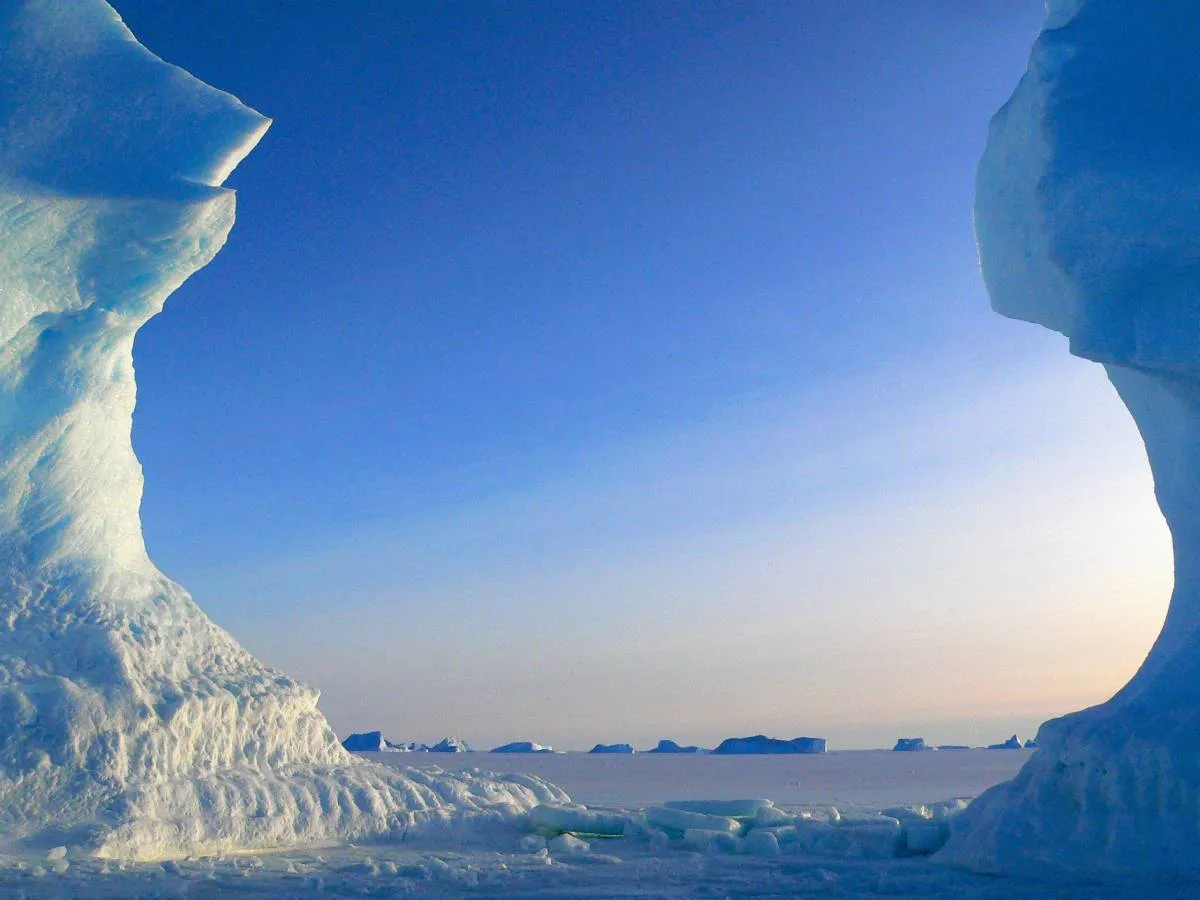One of the dumbest claims in the farrago of dumbassity that was Al Gore’s An Inconvenient Truth was the claim that sea levels were about to rise catastrophically. To really drive it home for gawping rubes, Gore hauled his bulky frame into a scissor lift, which, no doubt with a tortured whine, hefted the portly politician a dramatic six metres into the air.
This, Gore asserted, is what would happen if the entire Antarctic ice sheet melted. Well, we’d all get covered in pig-shit, too, if pigs started flying.
Which should happen right about when the entire Antarctic ice sheet melts.
Overall, the Antarctic ice shelf area has grown by 5305 km2 since 2009, with 18 ice shelves retreating and 16 larger shelves growing in area. Our observations show that Antarctic ice shelves gained 661 Gt of ice mass over the past decade.
Al Gore repeatedly emphasised West Antarctica – a particularly mendacious bit of cherry-picking, for several reasons. Firstly, West Antarctica is by far the smaller region, compared to East Antarctica. Secondly, West Antarctica contains the great Ronne and Ross ice shelves: vast shelves of ice extending over sea rather than land. These are more prone to melting and calving than the stupendous ice sheets blanketing the landmass of Antarctica.
Ice shelves calving – shedding masses of ice to form icebergs – is a dramatic sight. Which is probably why it’s so often exploited by climate change activists, to try and scare the pants off the gullible.
However, many iceberg calving events form part of the natural cycle of ice shelf evolution, with the steady regrowth and advance of the calving front typically seen after a calving event.
Over the past 30 years, ice shelves across Antarctica have been observed to advance steadily, retreat after iceberg calving events, and collapse catastrophically, as seen in the case of the Larsen A, Larsen B, and Wilkins ice shelves on the Antarctic Peninsula.
Measuring the advance and retreat of the calving front location is important for keeping track of whether Antarctica is overall shedding or gaining ice. The new study uses satellite measurements to compute ice shelf mass change from calving, over 80 per cent of the Antarctic coastline, from 2009 to 2019.
Much has been made by climate activists of dramatic reductions in the ice shelves of the Antarctic Peninsula: the problem here is that the Antarctic Peninsula is itself the merest fraction of the smaller West Antarctica. And, while the fraction of ice shelves on the Antarctic Peninsula lost ice, the much vaster areas of the rest of Antarctica grew. Most particularly, the two largest ice shelves.
Our results show that, over the 11 years from 2009 to 2019, ice shelves in Antarctica gained a modest 0.4% (or 5305 km²) of their total ice area. This area gain was dominated by significant 14,028 km² (1.5%) ice shelf area gains on the two largest Antarctic ice shelves, Ronne–Filchner and Ross, and a 3532 km² (1.3 %) area gain on the East Antarctic ice shelves. This counteracted the large reduction in ice shelf area on the Antarctic Peninsula, where 7.0% (-6692.5 km²) of ice was lost, and West Antarctica, where ice shelves lost 5.5% (-5563 km²) of their 2009 area […]
Larger shelves such as Ross, Ronne, and Filchner, gained 262 Gt yr-1 of ice. In East Antarctica, Baudouin, Totten, Mertz and Nansen were the only shelves to lose ice (-5, -4, -50, and -2 Gt yr-1, respectively); however, the region as a whole gained 51 Gt yr-1 of ice from 2009 to 2019.
The Cryosphere
So, ice shelves lost a total of 12,256 km² of ice, but gained 17,560km². In other words, a net gain of 5304 km² of ice.









